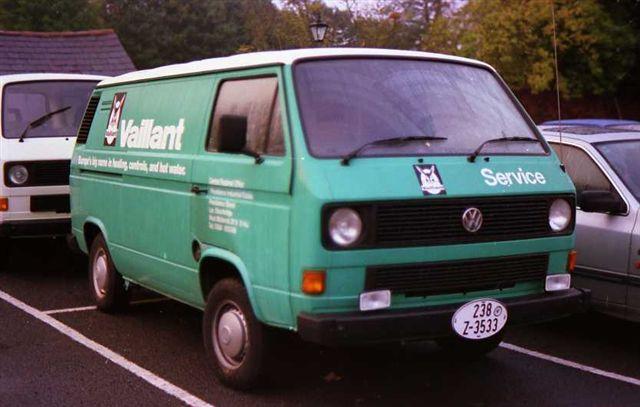This is one for the mature and experienced Vaillant heating engineer!
Symptom:
28 year old Vaillant Combi VCW-Sine 18 T3WF H in excellent working order. Heating and Hot water work correctly. However, the unit has developed a minor tapping/knocking noise after HOT WATER demand is closed. The noise occurs for approximately 3 secs just prior to the burner shut off.
The tapping is coming from the DC solenoid. The DC Solenoid is not switching off cleanly. As the PCB/Electronic board reduces the voltage to the DC Solenoid it appears to get to a level when the DC Solenoid oscillates on/off for about 2 - 3 seconds. This causes the tapping noise.
The heating works well. It shuts off the DC solenoid perfectly when it reaches the set temperature ( 1 thro 8 on temperature dial). There is no tapping. This means that the PCB Electronics which modulate the voltage to the DC Solenoid is working correctly. (The NTC sensor and heating temperature rheostat voltages at the inverting and non inverting inputs of the op amp when equal drive the op amp into saturation and reduces the output voltage to zero (which switches off the voltage to the DC solenoid). The Vaillant installation and servicing manual states the voltage across the DC Solenoid should be between 15 - 5 vdc during operation but only suggests switch off should be about 5vdc. The voltage to the DC solenoid actually reduces to about 3.1vdc before shutting off for both Hot Water and Heating (This I believe is not uncommon and not the problem).
My question to the forum is:
Does anyone know the PRIMARY mechanism used by the Vaillant Combi VCW-Sine 18 T3WF H to switch off the DC solenoid after Hot Water demand is closed WHEN heating is switched ON? Or possibly know the answer to solving the tapping problem?
Thanks for any help.
Symptom:
28 year old Vaillant Combi VCW-Sine 18 T3WF H in excellent working order. Heating and Hot water work correctly. However, the unit has developed a minor tapping/knocking noise after HOT WATER demand is closed. The noise occurs for approximately 3 secs just prior to the burner shut off.
The tapping is coming from the DC solenoid. The DC Solenoid is not switching off cleanly. As the PCB/Electronic board reduces the voltage to the DC Solenoid it appears to get to a level when the DC Solenoid oscillates on/off for about 2 - 3 seconds. This causes the tapping noise.
The heating works well. It shuts off the DC solenoid perfectly when it reaches the set temperature ( 1 thro 8 on temperature dial). There is no tapping. This means that the PCB Electronics which modulate the voltage to the DC Solenoid is working correctly. (The NTC sensor and heating temperature rheostat voltages at the inverting and non inverting inputs of the op amp when equal drive the op amp into saturation and reduces the output voltage to zero (which switches off the voltage to the DC solenoid). The Vaillant installation and servicing manual states the voltage across the DC Solenoid should be between 15 - 5 vdc during operation but only suggests switch off should be about 5vdc. The voltage to the DC solenoid actually reduces to about 3.1vdc before shutting off for both Hot Water and Heating (This I believe is not uncommon and not the problem).
My question to the forum is:
Does anyone know the PRIMARY mechanism used by the Vaillant Combi VCW-Sine 18 T3WF H to switch off the DC solenoid after Hot Water demand is closed WHEN heating is switched ON? Or possibly know the answer to solving the tapping problem?
Thanks for any help.


